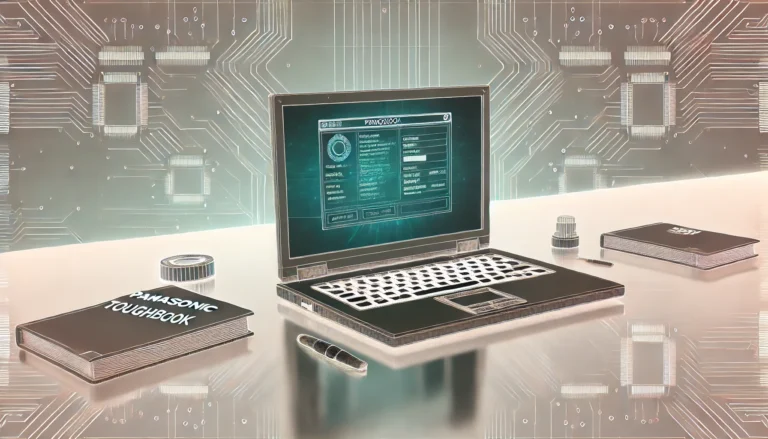
Power adapters are essential components when it comes to charging and powering electronic devices. Whether it’s a laptop, smartphone, tablet, or any other device, a suitable power adapter can make a difference.
However, choosing the right one can be overwhelming with so many adapter options. In this comprehensive guide, we will walk you through everything you need to know about power adapters and how to buy the perfect for your device.
So, let’s jump right in!
Types of Adapters Available
Power Plug Adapters are the most common type. They convert AC power from a wall outlet to DC power for electronic devices. They come in various sizes, voltages, and amperages.
Travel Adapters: Designed for international travel, these adapters allow you to use your devices in different countries with varying electrical standards.
Car Adapters: These adapters convert DC power from your car’s cigarette lighter or USB port to power your devices while on the go.
USB Plug Adapters: These adapters connect USB devices to different ports, such as USB-C to USB-A or USB-A to micro-USB.
Laptop Power Adapters: These are specifically crafted to power laptops and often have higher wattage ratings.
How to Choose the Right Adapter for Your Device?
Understanding Your Device’s Charging Needs
Before choosing the adapter, it’s important to understand the basic concepts associated with power adapters. A power adapter is a device that transforms AC (alternating current) voltage from a wall outlet into DC (direct current) voltage suitable for your electronic device. The DC voltage is usually lower than the AC voltage provided by electrical outlets.
Power adapters vary in design and size, but they all fulfil the same function—supplying the appropriate amount of power your device needs. To get the right power adapter, it is crucial to understand your device’s power requirements. You can find this information on the original charger or your device’s user manual.
Voltage is the difference in electrical potential between two points in a circuit, measured in volts (V). It indicates the force driving electricity through your device. A power adapter with the wrong voltage can harm your device or create safety hazards.
Current is the rate of electric charge flow in a circuit, measured in amperes (A). It specifies how much electricity passes through your device over time. Wattage is calculated by multiplying voltage and current, representing the total power your device consumes. It helps determine the appropriate power adapter required for efficient charging.
Determine Your Power Adapter Specifications
After determining your device’s power needs, it’s time to match it with a suitable power adapter. Choose an adapter that matches or exceeds your device’s voltage or current ratings. However, it’s important not to exceed the maximum voltage and current specified for your device.
Using a power adapter with a higher rating will result in overheating, damage to internal components, or even pose fire risks. If you’re uncertain about compatibility, it’s best to consult the manufacturer or seek professional guidance.
Also, take into account the connector types your device requires. Various devices integrate connectors, such as USB Type-C, Micro USB, Lightning, or proprietary connectors. Thus, you must ensure the power adapter you choose is compatible with your device.
Choose Between Standard or Fast Charging
Nowadays, many devices support fast charging technology, which significantly impacts charging time. If your phone is compatible with fast charging, look for an adapter that supports the same technology. These adapters are designed to provide a higher power output alongside a faster charging experience.
You should also remember that fast charging requires specific cables or even proprietary technologies, so check your device’s specifications for compatibility.
Consider Portability and Travel-Friendly Options
If you travel frequently or are often on the move, it’s important to consider the adapter’s portability. Compact and lightweight models are handy for easy transport. Additionally, some adapters feature interchangeable plugs for various regions, making them perfect for international travel. Evaluate your needs and lifestyle to choose the most easy-to-handle adapter for you.
Quality and Safety Considerations
Quality and safety are important when choosing a power adapter. Poorly designed or counterfeit adapters can pose serious risks, such as electrical shocks, fires, or short circuits.
To get reliable quality, opt for adapters from reputable manufacturers. Look for certifications such as BIS (Bureau of Indian Standards), UL (Underwriters Laboratories), or CE (Conformité Européene), which confirm compliance with safety standards. Additionally, essential features like overcurrent, short circuit, and surge protection are crucial to protect your device from potential damage.
Additionally, read the reviews from other users to gauge their experiences with a particular brand or model.
Additional Features and Compatibility
Some adapters offer additional features, such as multiple USB ports, enabling you to charge several devices simultaneously. This is especially useful if you own multiple devices or share chargers with others. Also, ensure the adapter is compatible with your phone‘s operating system to prevent potential compatibility issues.
Tips and Tricks for Adapter Care
If you want to ensure the longevity and safe operation of your power adapters, follow the given tips:
- Regularly wipe the adapter with a soft, dry cloth to remove dust and debris.
- Use compressed air to clear out dust from the ports, but avoid touching the inside with your fingers.
- Ensure the adapter has proper ventilation. If it gets too hot, unplug it and let it cool down.
- Check for frays, bends, or other signs of wear and tear on the cables. Replace them if you notice any damage.
- Make sure the adapters’ voltage and Ampere ratings match your device.
- Unplug the adapter when not in use to save energy and prevent overheating issues.
- If you use a power adapter with firmware, check for updates regularly to ensure optimal performance and security.
Conclusion
Buying the right adapter is essential to ensure proper charging and powering of your electronic devices. By thoroughly understanding your device’s specific power requirements, including voltage, current, and wattage, you can make an informed choice that avoids potential safety hazards.
When you delve into the market, consider additional factors such as the importance of charging type and portability. Opt for high-quality adapters from reputable manufacturers that meet recognised quality standards to mitigate risks associated with poorly designed or counterfeit products.
Pay attention to additional features, such as multiple USB ports, which can enhance functionality for users with multiple devices. Lastly, take proper care of your adapters to ensure maximum lifespan and safe operation.
for more you can click here.






